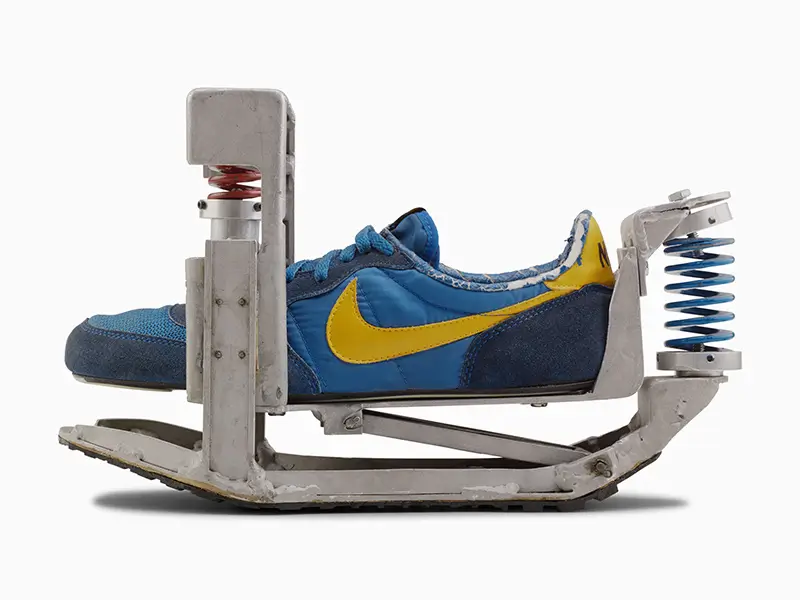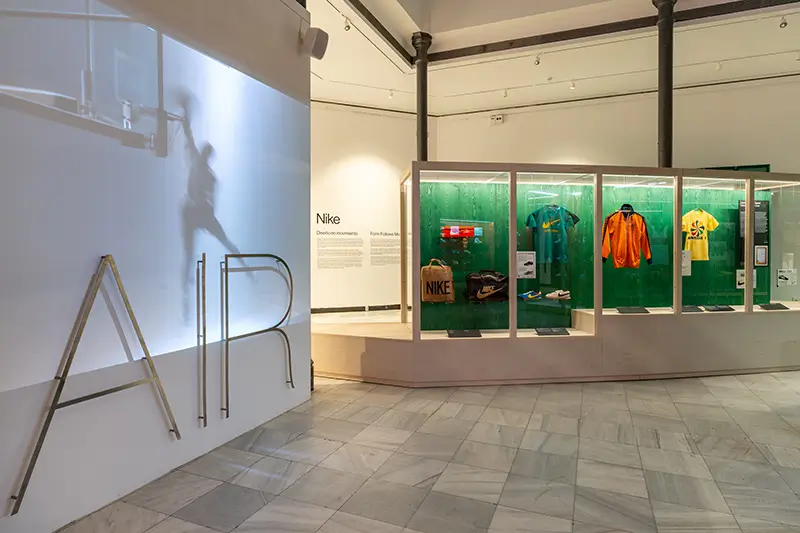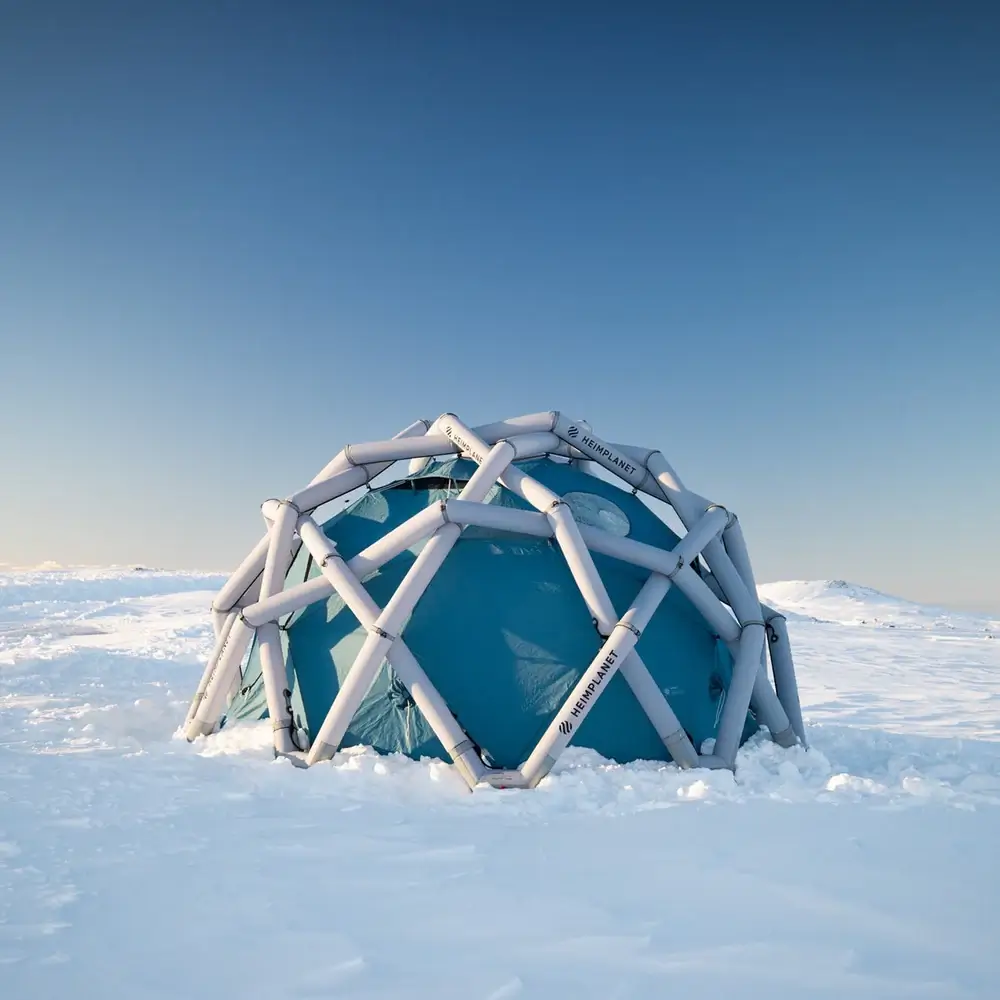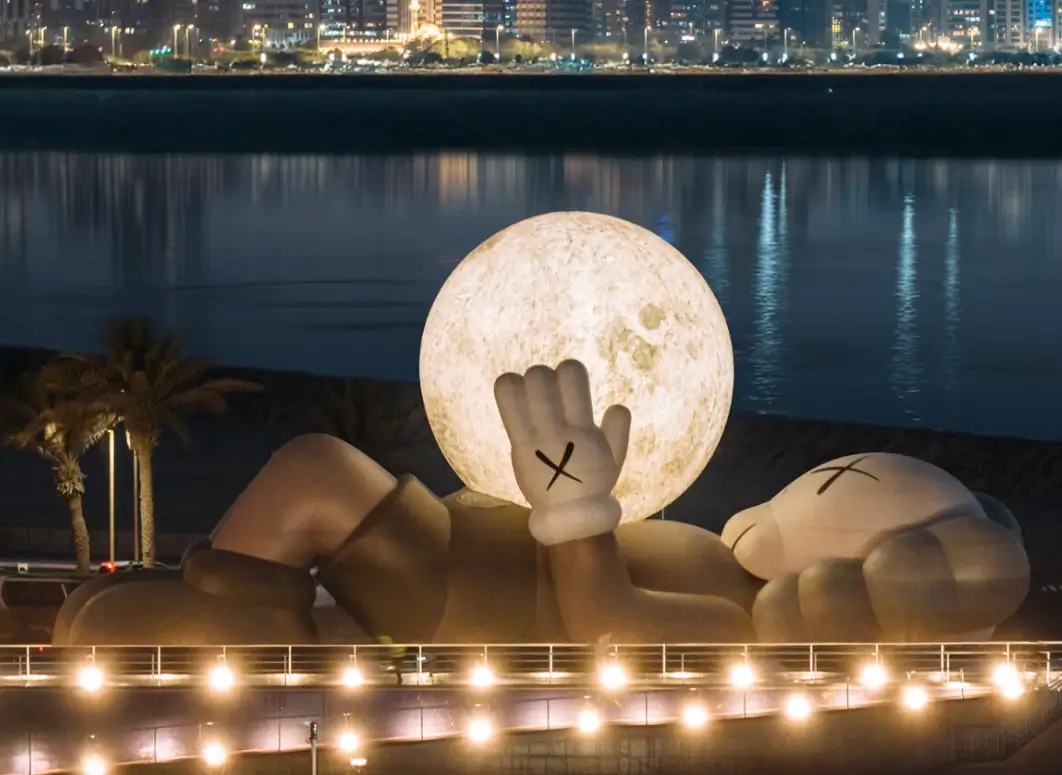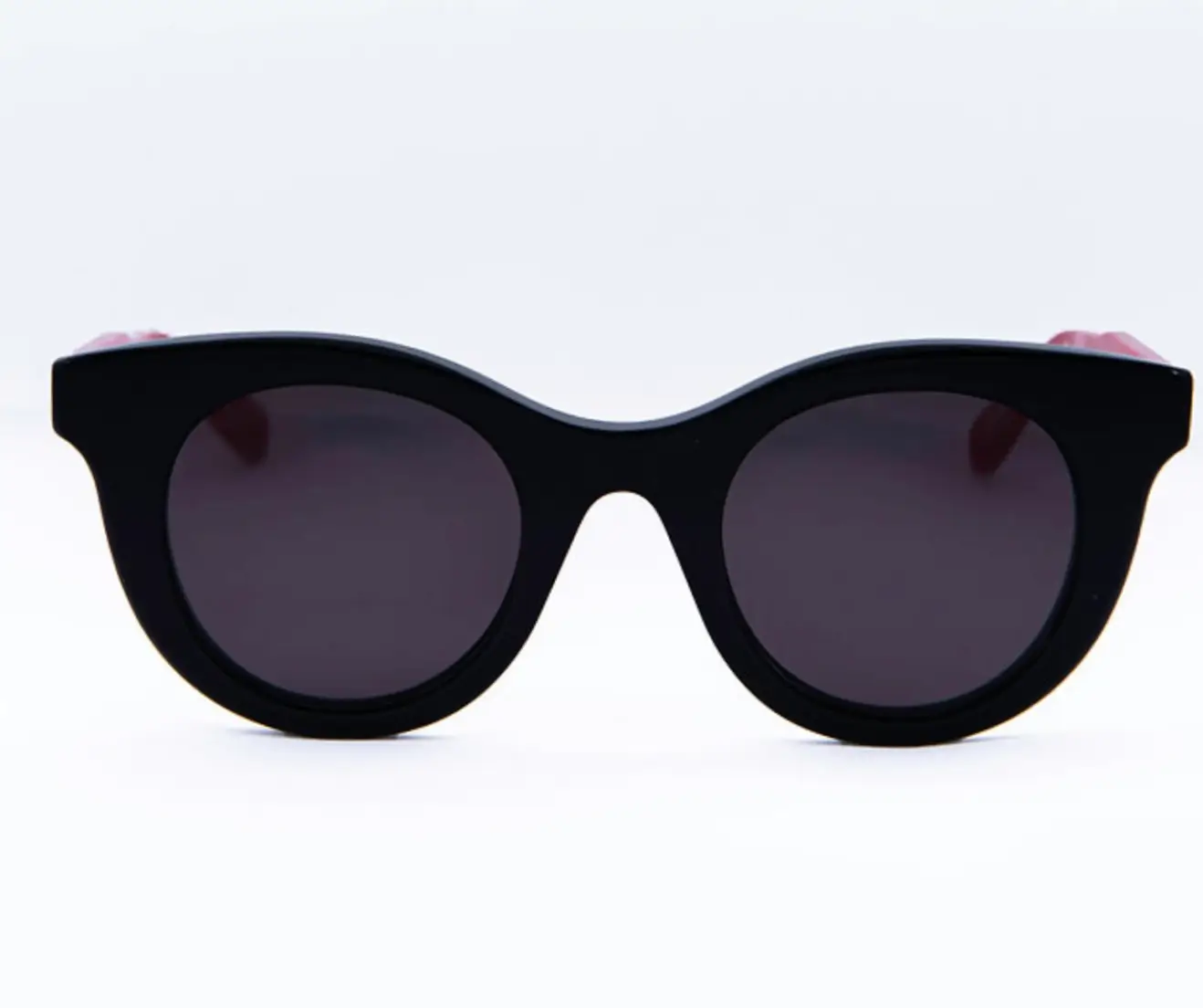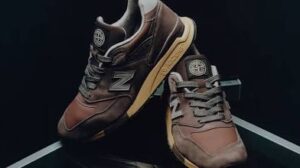the move
Nike’s arrival at Madrid’s TeamLabs with NIKE. DESIGN IN MOTION marks a cultural milestone—not only for European creative communities, but for the global language of design itself. Few brands hold such a complex and influential archive, a sixty-year lineage that spans running tracks, hardwood courts, Olympic podiums, skate parks, and city streets across continents. Fewer still can articulate that legacy in a way that feels alive, tactile, and in perpetual motion.
This exhibition, staged inside TeamLabs’ labyrinth of immersive, data-driven installation spaces, becomes more than a retrospective. It is a living experiment in what design can do when it transcends nostalgia and becomes a kinetic force—an ecosystem of ideas moving forward as quickly as Nike’s fastest athletes. Madrid, with its hybrid of historical grandeur and accelerated creative energy, becomes the ideal host city. Here, the exhibition transforms into a cultural beacon, a temporary monument to the restless pursuit of better that has defined Nike’s past and continues to define its future.
evolve
To speak about Nike’s design legacy is to speak about the evolution of modern sport, fashion, and cultural identity. From its origins as Blue Ribbon Sports in 1964 to the global juggernaut it is today, Nike has never been a passive observer of cultural momentum—it has been a catalyst.
The exhibition opens with an archival immersion, a glowing corridor of redesigned artifacts and recontextualized prototypes. Here, technology meets sentiment. Visitors encounter the early Waffle trainers not as relics but as objects humming with latent potential, presented through magnified visuals, exploded 3D renderings, and digital overlays that allow the viewer to peel back the layers that once lay hidden inside Bill Bowerman’s original experiments.
This is the start of a narrative arc that consistently returns to one idea: Nike has always been a brand in motion, and motion is an engine for reinvention. Over the decades, design became a method of decoding performance. Every shoe, garment, and silhouette—no matter how iconic—remains in negotiation with the next idea, the next problem to solve, the next athlete to uplift.
Madrid’s TeamLabs becomes a gallery for these questions, a space tuned to innovation, interactivity, and sensory storytelling. Here, Nike’s sixty-year arc reads less like a timeline and more like a symphony of moments vibrating against one another.
fx
A core theme emerges early in the exhibition: Nike’s design process has always been rooted in athletes’ bodies, movements, and instincts. Instead of presenting athletes as poster-sized icons on a museum wall, the exhibition reduces them to movement—dash lines, motion-captured silhouettes, slowed-down footage, digital anatomical studies, and soundscapes of breath, friction, speed, and contact.
Designers and visitors alike are encouraged to see what the athlete sees: the way a foot rolls through a stride; the pressure mapping across a basketball player’s pivot; the torsional twist of a skateboarding landing; the aerodynamic tension of a sprinter at the blocks.
These physiological moments form the basis of countless Nike innovations: Air cushioning, Flywire, Flyknit, React foam, VaporWeave, ZoomX, the carbon-fiber plate revolution, and even lifestyle technologies like ISPA’s modular architecture.
TeamLabs amplifies these micro-movements with interactive projection rooms where your own motion becomes part of the installation. Step, run, gesture, or shift your weight, and the digital environment responds—light echoes your footfall, geometric patterns ripple from your steps, and the air around you seems to breathe with your movement.
It’s a reminder that Nike’s work is not purely aesthetic loveliness; it is anatomy translated into products, motion sculpted into form.
sustainable
One of the strongest chapters of the exhibition is its contemplation of sustainability—not as a trend or a corporate checkbox, but as a design directive that reshapes every decision.
The Move to Zero ethos is reframed here through physical materials, prototypes, and interactive modules showing how waste becomes resource. Visitors can touch upcycled foams, analyze the granular makeup of Nike Grind, and examine deconstructed sneaker parts that highlight how the brand engineers recyclability into its products from the earliest sketches.
Robotic arms assemble and disassemble materials in real time, revealing how future Nike products might be designed with total circularity in mind. Meanwhile, light installations mimic the city-scale energy flows required to produce modern footwear, juxtaposed with the brand’s ongoing work to reduce emissions.
A gallery of experimental garments—some never released—pushes the narrative even further, revealing Nike’s willingness to question its own fundamentals. What if a shoe could be grown instead of manufactured? What if a running upper could regenerate? What if supply chains moved from global to hyperlocal, producing on-demand items within cities?
These aren’t hypotheticals in the exhibition—they’re displayed as prototypes, their textures raw, their silhouettes unusual, but their intent powerful: sustainability as a path toward reinvention.
View this post on Instagram
lang
If the functional dimension of Nike’s design philosophy is the skeleton, then the aesthetics are the musculature, the expression, the recognizable identity that shaped decades of street culture, music, art, and youth style.
TeamLabs leans into this cultural richness through a series of projection tunnels and spatial “moods”—rooms that capture distinct eras of Nike expression.
There is the unmistakable grit of early basketball culture, framed through monochrome video loops of asphalt courts and 1980s energy. There is the electric neon of 1990s sportswear, rendered as pulsating chromatic atmospheres that light up the floor beneath your feet. There is the Flyknit room, a woven cocoon of color and texture, a visual metaphor for the thread-based innovation that reshaped footwear aesthetics in 2012 and beyond.
One particularly stunning installation reimagines the Air Max lineage—Air bubbles enlarged, floating, illuminated from within like glowing planetary cores. You walk through Air itself, a physical manifestation of cushioning technology that has become as culturally significant as the Swoosh.
A separate gallery explores Nike’s influence on subcultures: the Air Force 1 and its dance with hip-hop; the Dunk and its orbit around skateboarding; ACG’s influence on outdoor fashion; and Nike Running’s transformation of performance silhouettes into 21st-century streetwear staples.
The exhibition acknowledges that Nike did not merely follow culture—it actively shaped it.
fwd
The final chapter of NIKE. DESIGN IN MOTION shifts entirely into speculation, showcasing the ways computational design, machine learning, and digital fabrication are redefining what a sports brand can be.
Here, prototypes and renders sit alongside experimental physical objects. Visitors see midsole structures grown through algorithmic patterning, uppers created by robotic weaving technologies, and AI-generated design concepts produced in collaboration with Nike’s human designers.
One central idea emerges: the future of design is hybrid. Craftsmanship and computation, heritage and futurism, human instinct and machine precision—they coexist, mutually amplifying one another.
TeamLabs enhances this by allowing visitors to participate. In one room, motion sensors capture your stride and instantly generate a digital footwear concept tailored to your biomechanical signature. In another, you manipulate on-screen fibers to see how different tensions and weaves affect flexibility and durability.
The future Nike envisions is deeply personalized, less about mass production and more about micro-precision. Design becomes a conversation between body and machine, athlete and algorithm.
location
The decision to bring this exhibition to Madrid is not incidental. The city has become one of Europe’s most vibrant hubs for interdisciplinary creativity, where design, tech, art, and fashion intersect with increasing intensity. TeamLabs itself embodies that hybridity—part laboratory, part museum, part digital playground.
Madrid’s audience is uniquely positioned for an exhibition of this nature. The city’s youthful design students, emerging artists, Athletes, sneaker enthusiasts, cultural theorists, and global travelers have all shaped a creative atmosphere that balances traditional craftsmanship with bold experimentation.
Nike’s narrative of motion aligns seamlessly with Madrid’s cultural rhythm. The exhibition feels like a continuing conversation with the city rather than a temporary rent of space.
ideologue
At its core, NIKE. DESIGN IN MOTION is a manifesto. It argues that design is not static. It is not a fixed object on a pedestal or a preserved artifact in an archive. Design is movement—movement of ideas, materials, people, bodies, and possibilities.
Over sixty years, Nike’s identity has been forged in the crucible of this motion. The brand’s most iconic innovations—from Air to Flyknit to React to the carbon plate era—were never about chasing trends. They were about listening to motion, studying motion, amplifying motion.
The exhibition celebrates that ethos through immersive experience, but it also challenges visitors to think about design as an evolving responsibility. Motion can uplift or disrupt. It can conserve or consume. It can innovate or complicate. The next sixty years of design will require even more discernment, courage, and imagination than the last.
Nike presents itself not as the hero of the story, but as a student—still learning, still iterating, still chasing new possibilities.
legacy
By the time visitors exit the exhibition, they are left with a sense of expansion. Not only of Nike’s impact, but of design’s capacity to change shape across generations.
You walk out understanding that design—when done with intention—becomes a language. A dialogue. A blueprint for imagining who we might become and what worlds we might build.
Nike’s sixty years are impressive, but what NIKE. DESIGN IN MOTION communicates most clearly is that legacy is not the point. The point is momentum—the enduring belief that everything can be redesigned, refined, or reimagined.
In Madrid, surrounded by the energy of TeamLabs’ immersive landscape, that belief feels contagious. You leave with motion in your bones.
No comments yet.

